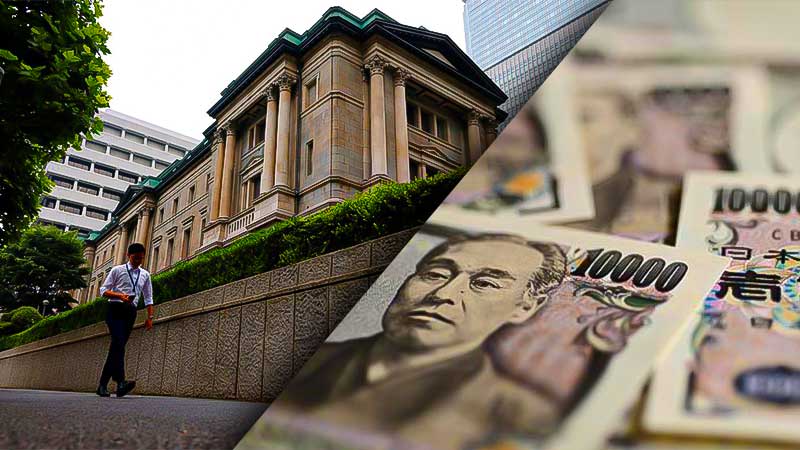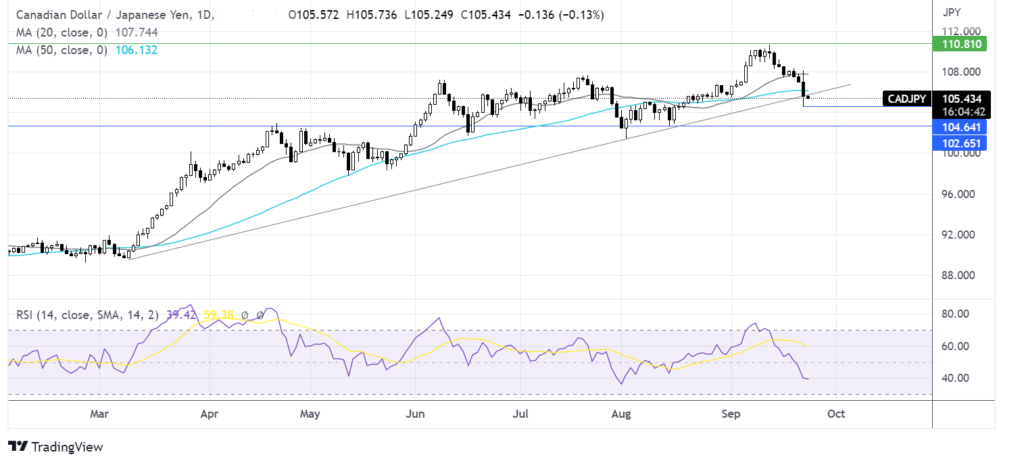Japan intervenes and global PMIs in focus

CAD/JPY => The pound falls to 1.1250
FTSE => The index drops to 7150
EUR/USD => The euro falls below 0.9850
CAD/JPY falls after Japan intervenes
CAD/JPY fell 1.3% in the previous session after the Japanese government intervened in the FX market for the first time in 24 years. The move came shortly after the BoJ kept monetary policy unchanged, sticking with an ultra-accommodative stance, defying the global rush to raise interest rates. The dovish BoJ sent the yen lower, crossing the key at 145.00 versus the USD and triggering a reaction from the BoJ. Meanwhile, the loonie was broadly weaker, despite oil prices ending the session higher. Oil is set to lose 2% across the week on demand worries. Meanwhile, CADJPY is set to lose 2% this week. Today attention is turning to Canadian retail sales, which are expected to fall as high inflation and high-interest rates deter shoppers. Weak sales data could pull CAD/JPY lower.

Where next for CAD/JPY?
CAD/JPY ran into resistance at 110.62 before rebounding lower, falling below the 50 & 20 sma and the multi-month rising trendline. This, combined with the bearish RSI keeps sellers hopeful of further downside. Sellers will look to break support at 104.50, yesterday’s low, opening the door to 102.60 the August 15 low. Meanwhile, buyers will look for a ries above the trendline resistance at 105.83 to expose the 50 sma at 106.20 and the 20 sma at 107.72. A break above here opens the door to the 110.62 high.
FTSE awaits the mini-budget
The FTSE closed 1% lower yesterday after the BoE hiked interest rates by 50 basis points to fight inflation of 9.9%. The benchmark rate now sits at 2.25%. The central banks warned that the UK was likely already in a recession, and inflation is expected to peak at around 11%. The BoE’s decision came ahead of the Chancellor’s min-budget, where Kwasi Kwarteng is expected to announce more details surrounding the energy support package, which is expected to be extended to businesses, as well as a slew of tax cuts, which he hopes will stimulate the economy, lifting GDP to 2.5%. Still, the market is nervous about how the Government will be able to afford all this; borrowing is set to rose dramatically.
EUR/USD falls ahead of PMI data
After falling to a fresh 20-year low of 0.9809, EUR/USD rose to end the session flat at 0.9844. The US Dollar experienced volatile trade as investors continued digesting the hawkish Fed meeting and slightly softer than expected jobless claims. The euro fell in risk-off trade post-Fed and amid rising concerns over Putin’s escalation of the war in Ukraine. Today the pair is falling as attention turns to business activity data for both the eurozone and the US. The composite PMI, considered a good gauge for business activity, is expected to show a deeper slowdown in September in the euro. Meanwhile, there have been doubts over the US PMI data, with services showing a deep contraction, yet the ISM services PMI has shown solid expansion. Still, better than forecast data is like to boost the USD.
Support can be found at 0.9806 (2022 low) and 0.9750 (round number).
Resistance for the pair can be seen at 0.99 (August low) and 0.9985 (20 sma).
